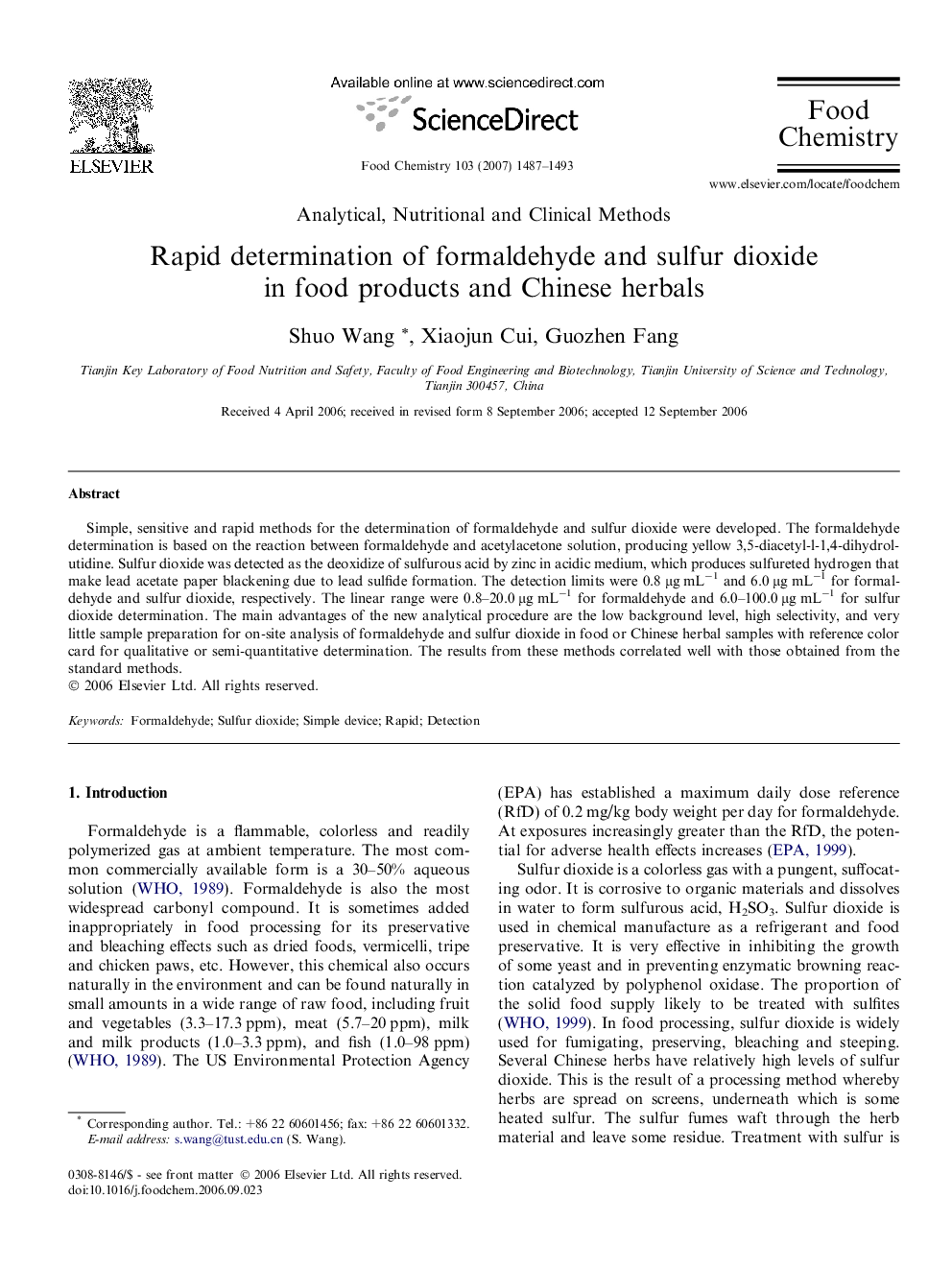| Article ID | Journal | Published Year | Pages | File Type |
|---|---|---|---|---|
| 1190364 | Food Chemistry | 2007 | 7 Pages |
Simple, sensitive and rapid methods for the determination of formaldehyde and sulfur dioxide were developed. The formaldehyde determination is based on the reaction between formaldehyde and acetylacetone solution, producing yellow 3,5-diacetyl-l-1,4-dihydrolutidine. Sulfur dioxide was detected as the deoxidize of sulfurous acid by zinc in acidic medium, which produces sulfureted hydrogen that make lead acetate paper blackening due to lead sulfide formation. The detection limits were 0.8 μg mL−1 and 6.0 μg mL−1 for formaldehyde and sulfur dioxide, respectively. The linear range were 0.8–20.0 μg mL−1 for formaldehyde and 6.0–100.0 μg mL−1 for sulfur dioxide determination. The main advantages of the new analytical procedure are the low background level, high selectivity, and very little sample preparation for on-site analysis of formaldehyde and sulfur dioxide in food or Chinese herbal samples with reference color card for qualitative or semi-quantitative determination. The results from these methods correlated well with those obtained from the standard methods.
